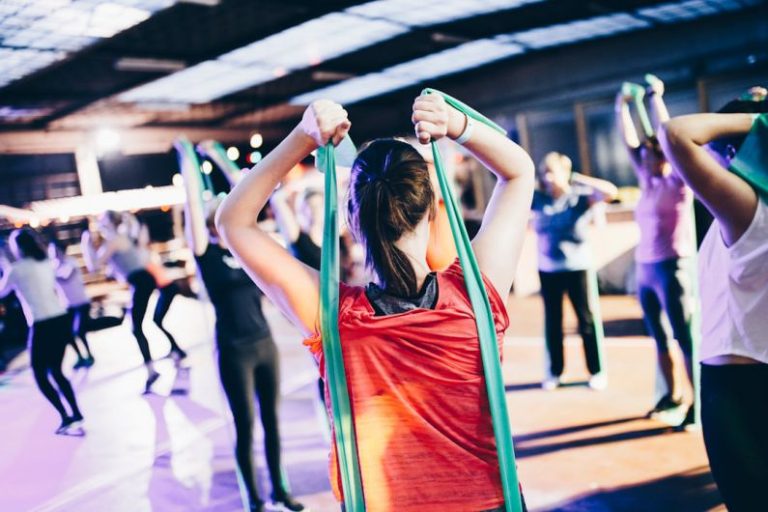The Importance of Flexibility in Fitness
In the realm of fitness, many individuals often prioritize aspects like strength and endurance, overlooking the crucial element of flexibility. The importance of flexibility in fitness cannot be understated, as it plays a vital role in overall health and well-being. Flexibility is the ability of joints to move through their full range of motion, and incorporating flexibility training into your fitness routine offers a myriad of benefits that can enhance your performance, prevent injuries, and promote longevity.
Enhanced Performance
Flexibility is closely linked to performance in various physical activities, including sports and exercise routines. When your muscles and joints are flexible, you can move more freely and efficiently, which can improve your athletic performance and overall functional abilities. For example, increased flexibility in the hip flexors and hamstrings can enhance your running stride length and speed, while improved shoulder flexibility can benefit your performance in activities like swimming and weightlifting.
Prevention of Injuries
One of the key benefits of flexibility training is its role in injury prevention. Tight muscles and restricted range of motion can increase the risk of injuries during physical activities. By regularly stretching and engaging in flexibility exercises, you can improve muscle elasticity and joint mobility, reducing the likelihood of strains, sprains, and other common injuries. Maintaining good flexibility can also help alleviate muscle imbalances and correct poor posture, further reducing the risk of musculoskeletal issues.
Improved Posture and Alignment
Flexibility training can contribute to better posture and alignment, which are essential for overall health and proper body mechanics. Tight muscles can pull the body out of alignment, leading to postural issues such as rounded shoulders, forward head posture, and an arched lower back. By incorporating stretching exercises that target specific muscle groups, you can release tension, improve flexibility, and restore proper alignment, resulting in better posture and reduced strain on the spine and joints.
Enhanced Range of Motion
Having good flexibility allows you to move your joints through a full range of motion, which is essential for performing everyday activities and maintaining joint health. As we age, joint mobility tends to decrease, making simple tasks like bending, reaching, and twisting more challenging. Regular flexibility training can help preserve and even enhance your range of motion, ensuring that you can move comfortably and efficiently in all directions. This increased range of motion can also translate to improved athletic performance and functional abilities.
Stress Relief and Relaxation
Flexibility training is not only beneficial for the body but also for the mind. Engaging in stretching exercises and yoga poses can help reduce stress, promote relaxation, and improve mental clarity. Stretching releases endorphins, the body’s natural feel-good hormones, which can elevate mood and reduce feelings of anxiety and tension. By focusing on deep breathing and mindful movements during flexibility exercises, you can create a sense of calm and mindfulness that contributes to overall well-being.
Longevity and Quality of Life
Maintaining good flexibility throughout your life is essential for promoting longevity and enhancing the quality of life as you age. Flexible muscles and joints support independence and mobility, allowing you to engage in daily activities with ease and reduce the risk of falls and injuries. By prioritizing flexibility in your fitness routine, you can support healthy aging, prevent age-related stiffness and muscle tightness, and enjoy a higher quality of life well into your later years.
Incorporating Flexibility Training into Your Fitness Routine
To reap the benefits of flexibility training, it is important to incorporate stretching exercises and mobility drills into your regular fitness routine. Aim to include a variety of stretches that target different muscle groups, focusing on both static stretches held for a period of time and dynamic stretches that involve movement. Incorporating activities like yoga, Pilates, and tai chi can also be effective ways to improve flexibility, balance, and body awareness.
Make it a priority to stretch before and after your workouts to warm up your muscles and prevent injury, as well as to cool down and aid in muscle recovery. Listen to your body and avoid pushing yourself too far into stretches, as this can lead to injury. Consistency is key when it comes to flexibility training, so aim to stretch regularly, gradually increasing the intensity and duration of your stretching sessions over time.
Conclusion: Embrace Flexibility for a Stronger, Healthier You
Flexibility is a fundamental component of fitness that should not be overlooked. By prioritizing flexibility training in your fitness routine, you can enhance your performance, prevent injuries, improve posture, relieve stress, and support healthy aging. Embrace the benefits of flexibility and make it a priority in your fitness journey to cultivate a stronger, healthier, and more resilient body and mind.






